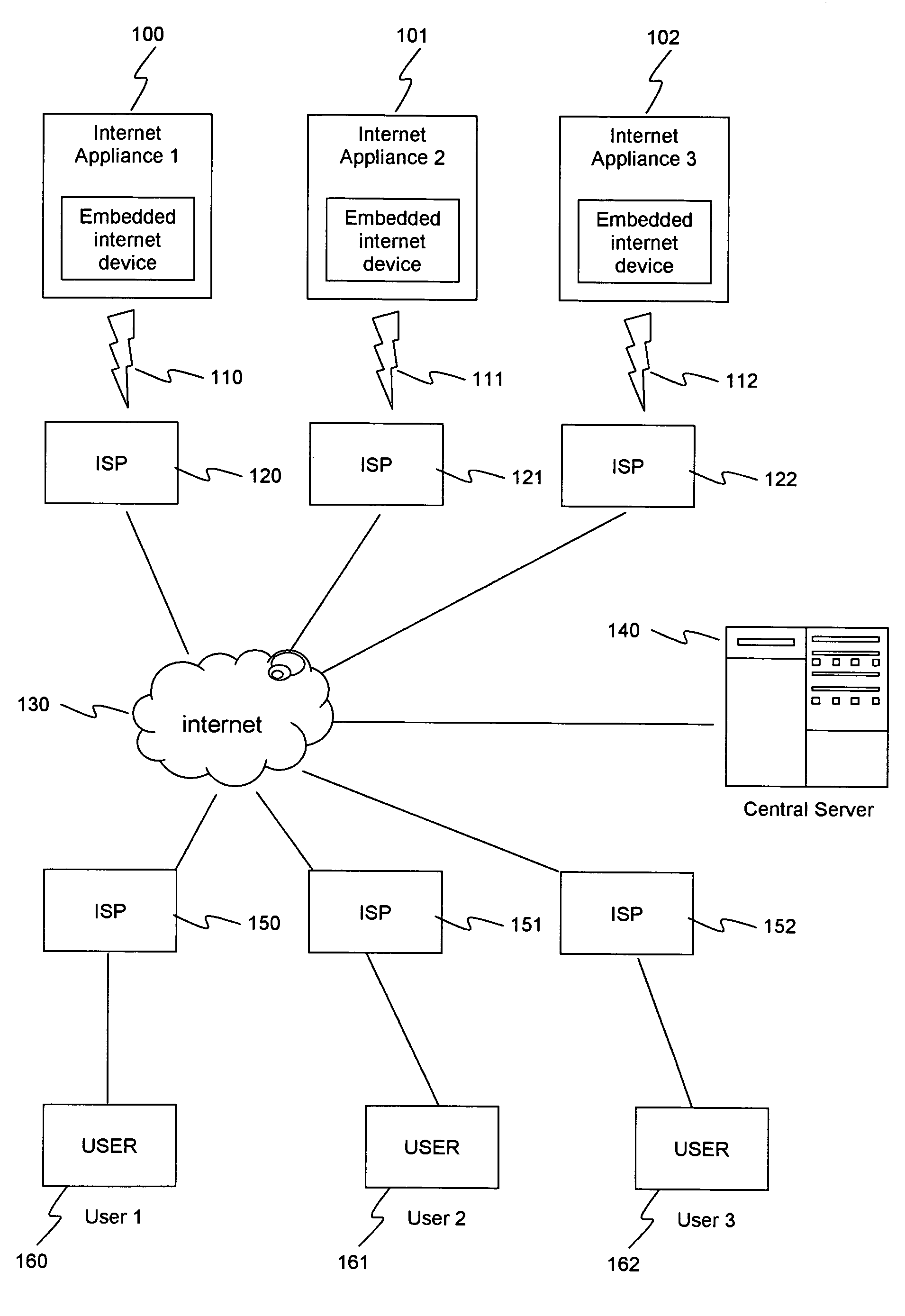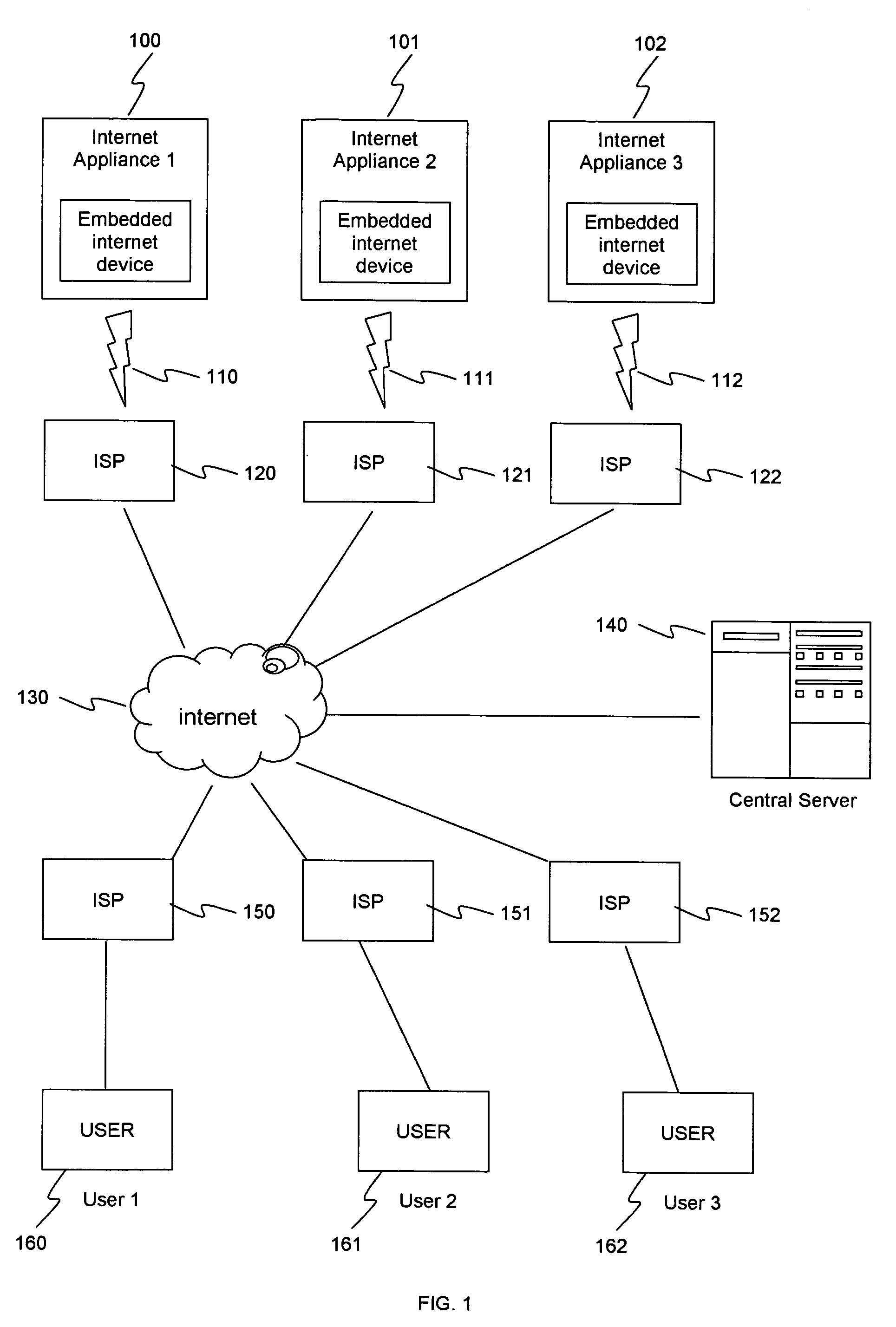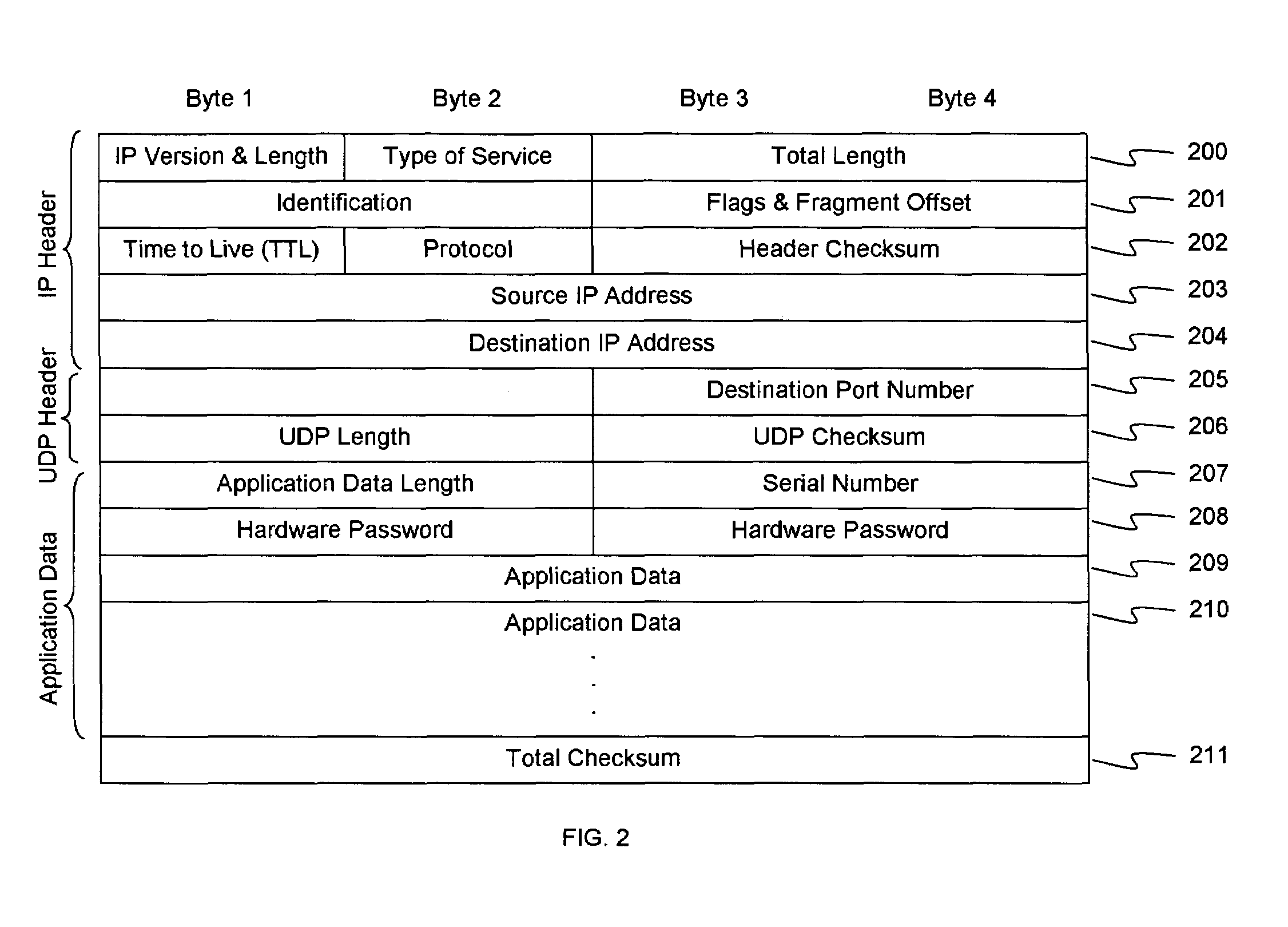Network architecture for internet appliances
a network architecture and internet appliance technology, applied in the field of network architecture for internet appliances, can solve the problems of imposing a huge burden on the allocation of ip addresses, limiting and much less functionality, and new limitations
- Summary
- Abstract
- Description
- Claims
- Application Information
AI Technical Summary
Benefits of technology
Problems solved by technology
Method used
Image
Examples
Embodiment Construction
)
[0026]The present invention relates to an improved means for users to communicate with internet appliances and for internet appliances to communicate with each other. As used herein, an internet appliance or an internet-enabled appliance is an equipment that is capable of connecting to the internet and communicating with other equipment on the internet without the need of any human intervention and without the need to be connected to a PC or equivalent machine. An embedded internet device as used herein refers to a device that provides said internet connectivity to any ordinary appliance or equipment. In some cases, the functionality of the embedded internet device may be a built-in component of an appliance, which makes the latter an internet appliance. In other cases, the embedded internet device may be a separate piece of equipment retrofitted into an existing appliance, turning the latter into an internet appliance.
[0027]The following description is presented to enable one of o...
PUM
 Login to View More
Login to View More Abstract
Description
Claims
Application Information
 Login to View More
Login to View More - R&D
- Intellectual Property
- Life Sciences
- Materials
- Tech Scout
- Unparalleled Data Quality
- Higher Quality Content
- 60% Fewer Hallucinations
Browse by: Latest US Patents, China's latest patents, Technical Efficacy Thesaurus, Application Domain, Technology Topic, Popular Technical Reports.
© 2025 PatSnap. All rights reserved.Legal|Privacy policy|Modern Slavery Act Transparency Statement|Sitemap|About US| Contact US: help@patsnap.com



